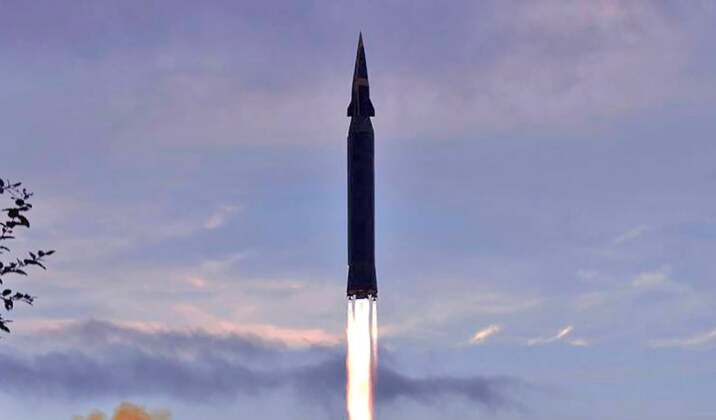News
North Korea’s New Tactical Missile Pairs a Hypersonic Glide Vehicle with Solid Fuel Engines: Why it is the Most Dangerous Yet?
North Korean state media on January 15 announced the first test launch of a new class of intermediate range ballistic missile had taken place the previous day, with the new asset having the potential to revolutionise the country’s ability strike targets across much of the Pacific as far as American military facilities on Guam. The state run Korean Central News Agency described the missile as “an intermediate-range solid-fuel ballistic missile [IRBM] loaded with a hypersonic manoeuvrable controlled warhead,” and highlighted that the launch was “aimed at verifying the gliding and manoeuvring characteristics of intermediate-range hypersonic manoeuvrable controlled warhead and the reliability of newly developed multi-stage high-thrust solid-fuel engines.” The missile is estimated to have a range of over 4000km, and to have been developed as a direct successor to the Hwasong-12, an older liquid fuelled missile design dubbed ‘Guam Killer’ abroad after its service entry in 2017.

The development of the Hwasong-12 and its predecessor the Hwasong-10 were notably leading factors spurring the United States to strengthen its ballistic missile defences on Guam, alongside parallel advances in strike capabilities by China and Russia. The Obama administration notably first deployed THAAD missile defence systems to the territory in 2014 in response to significant progress modernising the Hwasong-10 design at the time, while plans for the island’s future missile defence are set to make its airspace the most densely protected in the world. This reflects both the magnitude of the challenges which advancing adversary capabilities have posed as well as the importance of Navy, Air Force and new Marine facilities on Guam to America’s ability to project power into East Asia. The development of hypersonic glide vehicles, however, has the potential to render many of these air defence deployments obsolete, mirroring advances in North Korea’s short range tactical missile arsenal which are similarly considered to have left U.S. and local air defences in South Korea unable to provide meaningful protection.
Reports in November 2023 indicated that the first and second stage engines for a solid fuelled intermediate range ballistic missile had already begun ground testing in North Korea. Both engines saw their first tests conducted on November 11 and November 14 respectively, which according to state media “provided a sure guarantee for reliably accelerating the development of the new-type IRBM system.” This followed on from the successful development of the Hwasong-18 as the country’s first solid fuelled ballistic missile, which was successfully tested on April 13, July 12 and December 19, 2023, and was revealed in December to have entered serial production. Solid fuelled missiles have much shorter launch times, which is particularly valuable due to North Korea’s deployment of its arsenal from mobile launchers and reliance on mobility for their survivability. Use of solid fuel composites allows missiles to be stored fully fuelled, which is invaluable in wartime situations and creates much greater challenges to enemy efforts to neutralise arsenals on the ground.

North Korea’s new missile combines advances in solid fuel engine technologies with progress developing hypersonic glide vehicles, which were first flight tested in September 2021 and previously appeared to use the body and liquid fuelled engines of the Hwasong-12 for testing purposes. Such vehicles make missiles extremely difficult to intercept, and have not previously been deployed on any class of intermediate range missile, although the Chinese DF-17 and Russian Zircon shorter medium range missiles do carry them. The vehicles allow payloads to be delivered on highly unpredictable trajectories and retain very high degrees of in flight manoeuvrability, which seriously complicates efforts to shoot them down. Although North Korea has long since developed manoeuvrable re-entry vehicles for its missiles, including for export to Syria and Iran, a hypersonic glide vehicle would take the challenge posed by its strikes to enemy missile defences to an entirely new level. It is expected that such glide vehicles will eventually be integrated onto North Korean cruise missiles and intercontinental range ballistic missiles. The new intermediate range missile, meanwhile, is expected to replace the Hwasong-12 in serial production potentially in 2025. North Korea and the United States remain officially in a state of war, with defence planners in Pyongyang having long prized the ability to neutralise American bases across East Asia, in part due to the historical memory of the Korean War when these bases were used for attacks on Korean territory were far beyond the reach of retaliatory strikes.












